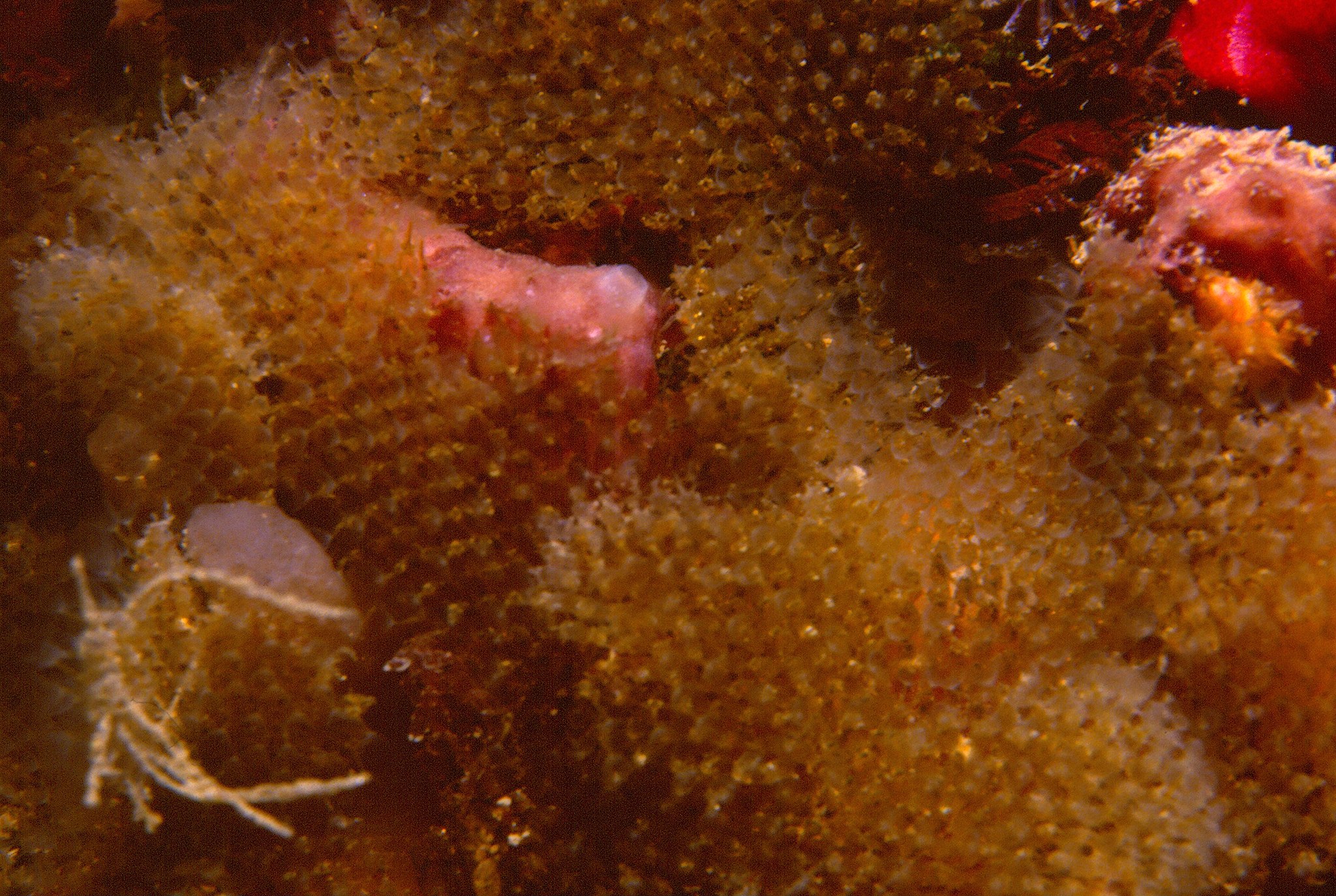Invasion History
First Galapagos Record: 2015General Invasion History:
The bryozoan Beania klugei was described from West Africa by Cook (1968), who distinguished it from B. intermedia, described from the Southwest Pacific. Beania klugei is widely distributed in the subtropical and tropical West Atlantic (Florida-Brazil) and the Indo-West Pacific, including the Red Sea, South China Sea, and Vanuatu (Winston 1982; Tilbrook et al. 2001; Vieira et al. 2010). In the Eastern Pacific, it was found on Coiba Island, off Panama (Hastings, 1930, as B. intermedia). In 2015, it was collected in the Galapagos Islands (McCann et al. 2019).
Invasion History in the Galapagos:
One colony of Beania klugei was collected on mangrove roots, Tortuga Bay, Santa Cruz Island, in February 2015 (McCann et al. 2019). Establishment of this bryozoan in the Galapagos islands is uncertain.
Invasion history elsewhere in the world:
Invasion history for Elsewhere in the World has not been summarized for this species at this time.
Description
Beania klugei is a marine bryozoan which grows in uniserial vine-like or semi-erect and is loosely attached to the substrate by radicles (root-like structures). Zooids are boat-shaped, thinly calcified, with a flat frontal membrane, and a rounded frontal surface. The average size of a zooid is 0.73 X .30 mm (Florida) to 0.855 X 286 mm (Galapagos). The proximal end has a narrow tube, which connects to the proximal zooid, from which it was budded. On either side of the operculum there is a 'bird-beak' avicularium. The zooids have no spines and no ovicells. The zooids have 26 tentacles. The colonies are yellowish tan in color (Winston 1982; Vieira et al. 2010; McCann et al. 2019).
Taxonomy
Taxonomic Tree
| Kingdom: | Animalia | |
| Phylum: | Bryozoa | |
| Class: | Gymnolaemata | |
| Order: | Cheilostomata | |
| Family: | Beaniidae | |
| Genus: | Beania | |
| Species: | klugei |
Synonyms
Potentially Misidentified Species
Cook (1968) distinguished B. klugei from B. intermeida, which has larger autozooids and marginal spines (Tilorook et al. 2001).
Ecology
General:
The bryozoan Beania klugei grows in vinelike colonies attached to algae in seagrass communities, mangroves, and fouling communities (Winston 1984). It reproduces asexually as zooids. It probably reproduces sexually by embryos developing inside the zooid, but ovicells have not been seen (Winston 1984).
Beania klugei is widely distributed in tropical-subtropical climates, including fouling communities, seagrass beds, and mangrove roots (Winston 1984; McCann et al. 2019). The zooids feed by extending the ciliated tentacles of the lophophore as a funnel, creating a current, and driving food particles into their mouths. The food is guided along the tentacles and through the pharynx by the cilia.
Food:
Phytoplankton; Detritus
Trophic Status:
Suspension Feeder
SusFedHabitats
| General Habitat | Mangroves | None |
| General Habitat | Grass Bed | None |
| Salinity Range | Polyhaline | 18-30 PSU |
| Salinity Range | Euhaline | 30-40 PSU |
| Tidal Range | Subtidal | None |
| Tidal Range | Low Intertidal | None |
| Vertical Habitat | Epibenthic | None |
Life History
Tolerances and Life History Parameters
| Minimum Temperature (ºC) | 15 | Field, Indian River Lagoon (Winsotn 1984) |
| Broad Temperature Range | None | Subtropical-Tropical |
| Broad Salinity Range | None | Polyhaline-Euhaline |
General Impacts
Impacts are unknown.
Regional Distribution Map
| Bioregion | Region Name | Year | Invasion Status | Population Status |
|---|---|---|---|---|
| SEP-Z | 2015 | Non-native | Unknown |
Occurrence Map
| OCC_ID | Author | Year | Date | Locality | Status | Latitude | Longitude |
|---|
References
Dick, Matthew H.; Tilbrook, Kevin J. Shunsuke F. Mawatari (2006) Diversity and taxonomy of rocky-intertidal Bryozoa on the island of Hawaii, USA, Journal of Natural History 40(38-40): 2197-2257Barnes, Robert D. (1983) Invertebrate Zoology, Saunders, Philadelphia. Pp. 883
Carlton, James T.; Keith, Inti; Ruiz, Gregory M. (2019) Assessing marine bioinvasions in the Galápagos Islands: implications for conservation biology and marine protected areas, Aquatic Invasions 14(1): 1-20
Cook, P. L. (1985) Bryozoa from Ghana, Zoologische Wetenschappen 238: <missing location>
Cook, Patricia L. (1968) Bryozoa (Polyzoa) from the coasts of tropical West Africa, Atlantide - Report 10: 115-262
Hastings, Anna B. (1930) Cheilostomatous Polyzoa from the vicinity of the Panama Canal, collected by Dr, C. Crossland on the cruise of S. Y. St. george, Proceedings of the Zoological Society of London 47: 697–750
McCann, Linda D.;; McCuller, Megan I., Carlton, James T.[ ,Keith, Inti; Geller, Jonathan B.; Ruiz, Gregory M. (2019) Bryozoa (Cheilostomata, Ctenostomata, and Cyclostomata) in Galapagos Island fouling communities, Aquatic Invasions 14: 85-131
Montoya-Cadavid, Erika; Flórez-Romero, Paola; Winston, Judith E. (2007) Checklist of the marine Bryozoa of the Colombian Caribbean, Biota Colombiana 8(2): 159 -184
Tilbrook, Kevin J. ; Hayward , P. J.;; Gordon, D. P. (2001) Cheilostomatous Bryozoa from Vanuatu, Zoological Journal of the Linnean Society 131: 35-109
Vieira, Leandro M.; Migotto1,, Alvaro E. Winston, Judith E. (2010) Shallow-water species of Beania Johnston, 1840 (Bryozoa, Cheilostomata) from the tropical and subtropical Western Atlantic, Zootaxa 2550: 1-20
Winston, Judith E. (1982) Marine bryozoans (Ectoprocta) of the Indian River area (Florida)., Bulletin of the American Museum of Natural History 173: 99-176
Winston, Judith E. (1995) Ectoproct diversity of the Indian River coastal lagoon, Bulletin of Marine Science 57(1): 84-93
